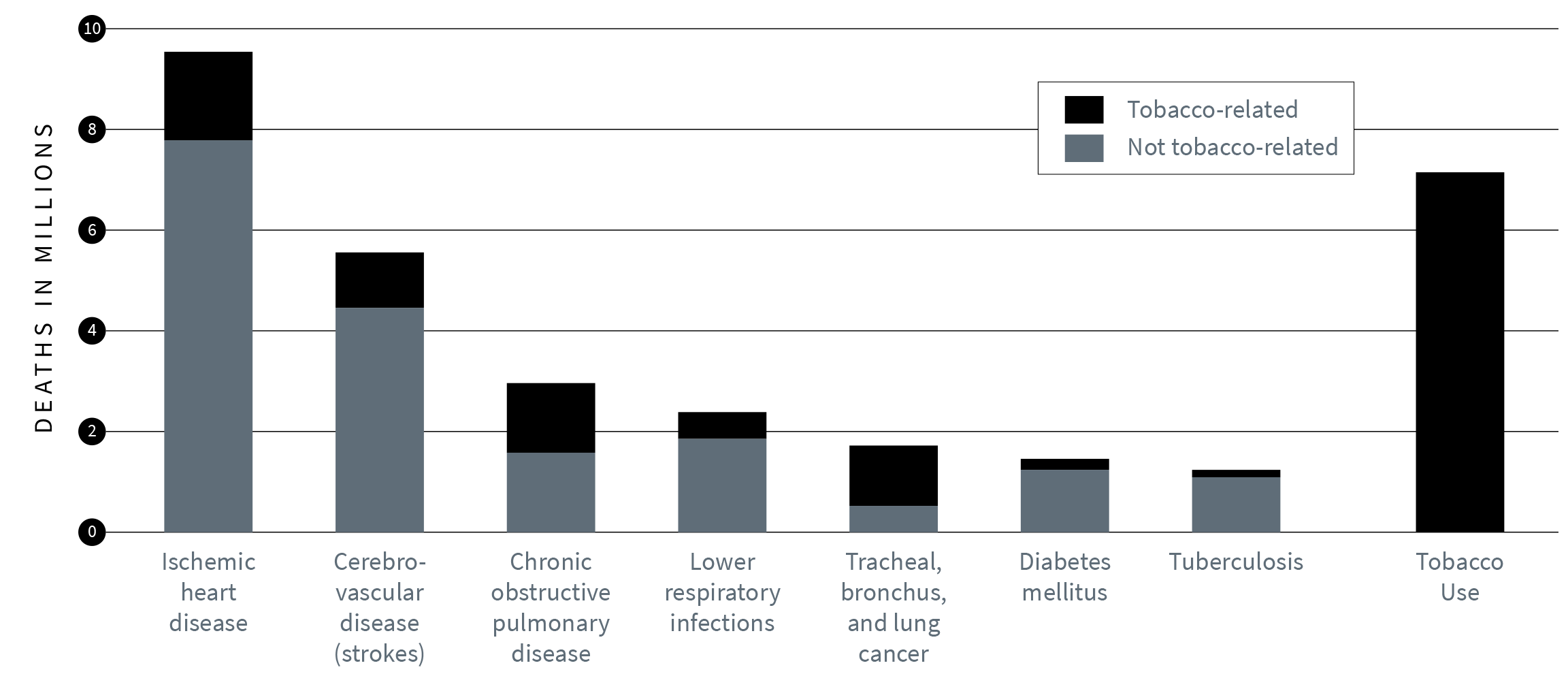Central nervous system
- Addiction
- Macular degeneration
Central nervous system
Cardiovascular
Diabetes
Surgical
Other
In addition to nicotine’s direct effects, tobacco use has numerous other health and societal consequences. Learn more at https://tobaccoatlas.org

Chronic use of nicotine contributes to stroke, high blood pressure, cardiovascular risk, and slows wound healing. Nicotine is also contained in other smoking cessation options: nicotine replacement therapies (patches, gums, lozenges) and e-cigarettes.
No therapies exist that directly block nicotine’s effects on the body. New treatments are particularly needed when attempts to quit smoking are not successful or quitters go back to smoking.